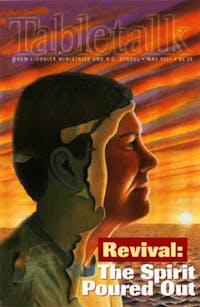
Request your free, three-month trial to Tabletalk magazine. You’ll receive the print issue monthly and gain immediate digital access to decades of archives. This trial is risk-free. No credit card required.
Try Tabletalk NowAlready receive Tabletalk magazine every month?
Verify your email address to gain unlimited access.
If asked to define “revival,” evangelicals from the eighteenth and twenty-first centuries would give starkly different answers. In his excellent book Revival and Revivalism: The Making and Marring of American Evangelicalism, 1750–1858 lain H. Murray explains why.
Beginning in the period following the First Great Awakening, Murray shows that the phenomenon that came to be called “revival” was well-known and fervently sought in churches throughout the American colonies. However, it was understood to be a sovereign work of God that could not be brought about through any human methodology. The church did have an acknowledged role, namely “the clear presentation of divine truth and prayer,” according to pastor Edward Griffin; however, there was to be “nothing to work upon the passions but sober, solemn truth, presented, as far as possible, in its most interesting attitudes, and closely applied to the conscience.” In other words, pastors and churches saw it as their duty to preach the Word of God faithfully and without embellishment, leaving the results entirely to God. At particular times and places, God chose to send superabundant blessing in the form of numerous conversions and a renewed zeal among believers, and these times came to be called revivals.
Murray’s accounts of the revivals that occurred while this understanding held sway are deeply moving. He quotes repeatedly from the writings of church leaders of the time, revealing their awe and deep gratitude for what they knew to be a work of God’s hand, not their own.
But these stirring accounts make what follows all the more dismaying. The Second Great Awakening at the end of the eighteenth century was soon corrupted by an emphasis on techniques that presumably could produce “revivals.” Some men, Murray notes, “attempted to carry the work farther than the Lord had done,” and abuses arose. They found that lengthy church meetings, certain types of music, direct and graphic appeals for a response, and other methods stirred the emotions of those in the pews, making them more likely to respond to the preaching. Speakers soon began to call for responses from their hearers, asking them to stand, raise a hand, or come forward to the “altar.” In time, such responses came to be equated with conversion, and in the general fervency of the times it was easy to conclude that men who could induce such responses were, in fact, bringing revival. These men became known as revivalists and their evangelistic meetings came to be called “revivals.”
It is impossible to read Murray’s book without concluding that, to some degree, American evangelicalism has exchanged a great birthright for a mess of pottage. But by uncovering the roots of present-day evangelicalism, Murray helps us understand ourselves and, by implication, shows us where we ought to go from here. That makes this a very worthwhile read.
Revival and Revivalism is published by the Banner of Truth Trust (www.banneroftruth.co.uk).
